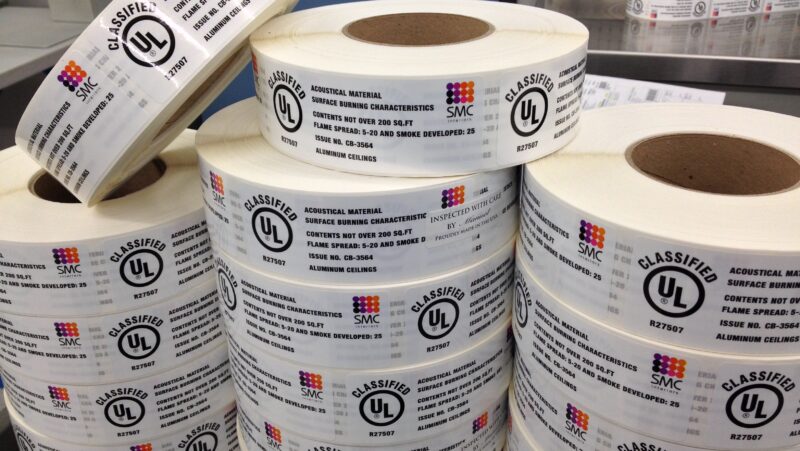You probably knew that your UL Labels needed to be provided by an authorized provider. But did you also know that there is more than one type of UL authorization and that there really is no cross-over between the different types? That’s where the UL database test comes in.
Understandably this can be utterly confusing for all parties, and can lead to all sorts of compliance issues. Thankfully UL offers a UL database tool to help ensure you hare working with a vendor that has the required authorization to produce each of your different UL labels. In typical UL fashion it isn’t the most intuitive, so let us help you use it:
HOW TO SEARCH THE UL DATABASE
Using the button below you can search the UL Database by company name. For example, as a test search type Coast Label Co to find our relevant UL files.
If a company is listed with UL, they will appear in the results along with their authorized files–however many that might be. If they don’t appear, then they aren’t authorized by UL. It’s that simple.
UNDERSTANDING THE UL DATABASE FILE CODES
Now that you see all the files listed, what do they actually signify? The identifiers are broken out into two components: first a Category Code Number (CCN), and then a file number. The file number is a unique and can be helpful for identification purposes. That said, for compliance purposes, we are much more interested in the CCN. It is helpful for quickly determining what specific types of UL labels a company is authorized to print. Here’s a breakdown of the various label Category Code Numbers, and what they actually mean:
PGAA – UL Printers Agreement
Having this authorizes a company to print the UL logo on labels and tags. Not valid for any of the performance standards (i.e. UL 969). Not considered a Recognized Component.
PGDQ2 – Labeling Systems
Authorizes printing of UL Recognized components for use in the USA. Tested to the UL 969 standard. Not valid for printing UL logos.
PGDQ8 – Labeling Systems
Authorizes printing of UL Recognized components for use in Canada. Tested to the CSA C22.2 No.0.15 standard. Important for products sold across all of North America. Not valid for printing UL logos.
PGJI2 – Printing Materials
Authorizes printing of UL Recognized components that are designed to receive secondary printing (e.g. thermal transfer) at the point-of-use using approved processes. This includes blank labels. For use in the USA and tested to the UL 969 standard. Not valid for printing UL logos.
PGJI8 – Printing Materials
Authorizes printing of UL Recognized components that are designed to receive secondary printing (e.g. thermal transfer) at the point-of-use using approved processes. This includes blank labels. For use in Canada and tested to the CSA C22.2 No.0.15 standard. Not valid for printing UL logos.


